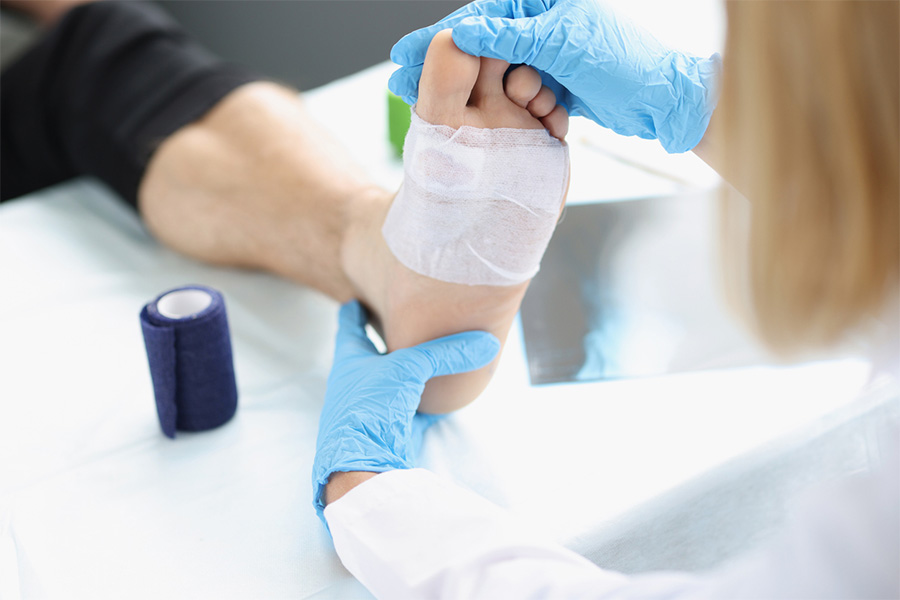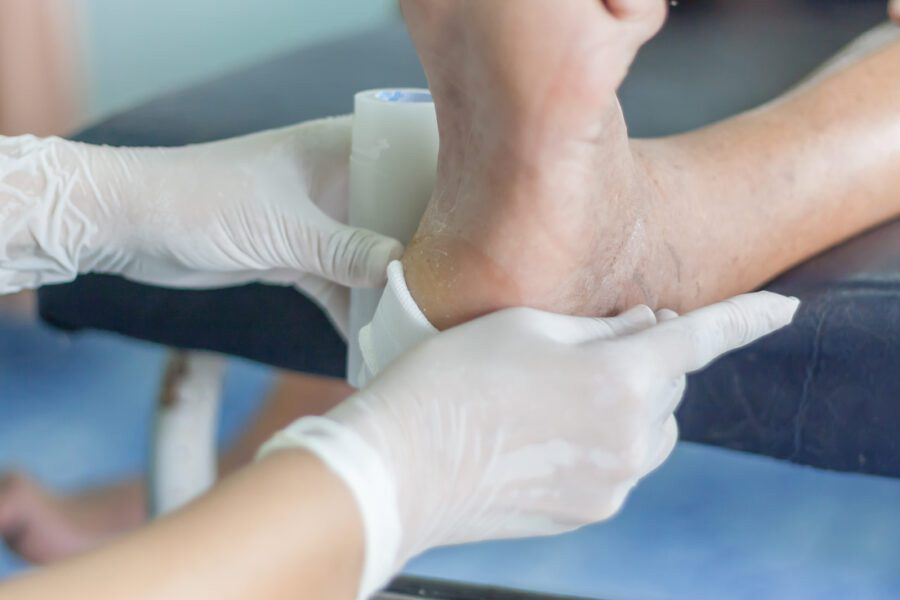Routine visits to a podiatrist skilled in diabetic foot care are key to healthy lower extremities. However, if you already have a diabetic wound and wish to go beyond what your foot doctor does in-office, here are some simple tips to help you manage that wound at home, so you heal, avoid complications, and enjoy life.
Why Can Diabetic Wounds Be Dangerous?
Frankly, diabetic wounds cannot heal on their own. In fact, if left untreated, these open ulcers can destroy skin, blood vessels, nerves, soft tissues, and even bone. A full 20 percent of diabetic wounds lead to some degree of amputation on the affected limb, and infection, both local and bodywide (sepsis), is far too common. They impact 50 percent of diabetics with ulcers.
Bone infections are called osteomyelitis, and skin infections are known as cellulitis. Both are treatable but stubborn and destructive. Some diabetics even develop gangrene with untreated wounds and amputation of all or part of the limb results.
Finally, diabetic wounds are indicators of serious health problems–diabetes, yes, and its associated neuropathy and peripheral artery disease (PAD). People with diabetic wounds may have other comorbidities, such as uncontrolled hypertension, obesity, and a sedentary lifestyle which leads to varicose veins. In short, people must take diabetic wounds seriously and get medical attention right away when symptoms develop.
What Are Some Simple Ways to Manage Diabetic Wounds?
Your podiatrist can educate you on many ways to prevent or lessen the effect of diabetic wounds. He or she can treat deformities that can contribute to wound formation–hammertoes and bunions, as examples. In-office wound debridement removes dead tissue. Your foot and ankle doctor is also an expert on how to care for an existing wound at home. Here are some things the doctor may recommend.
Control Your Blood Sugars
Work with your PCP or endocrinologist to develop ways to manage your blood glucose levels. Exercise, diet, and medications are common methods of control and proven ways to avoid complications, such as heart attack, stroke, retinopathy, and yes, foot ulcers.
Look at Your Feet, and Especially Your Wound, Daily
Inspect for areas of friction and redness. If you have a wound, look for drainage and increased redness and swelling. Notify your podiatrist right away.
Keep Your Wound Bandaged, Clean, and Dry
Ensure to use soft sterile bandages to protect your ulcer from contamination and to reduce friction. Cleanse your foot daily with sterile water or mild soap and warm water (if your doctor so instructs), and pat dry. Use a sterile 4×4 to dry the wound, and apply antimicrobial ointment or cream to keep the area moist and germ-free.
Wear a Walking Boot, or Use Crutches
More serious wounds need to be rested. So, elevate the foot when you can, and wear an offloading boot or use crutches to keep weight off the affected limb.
Avoid Going Barefoot
This applies to walking around the house, too. Also, wear shoes that fit well, provide good support, and place no undue friction on any foot areas.
Diabetic Wound Care in Cincinnati, OH
At Cincinnati Foot & Ankle Care, our board-certified podiatrists provide top-notch diabetic foot care. Beyond that, our foot and ankle experts gladly walk patients through the important steps of diabetic wound care and provide useful information to help them make the wisest decisions about their foot and ankle health and care.
To schedule a consultation with one of our podiatrists, call our office nearest you or use our convenient online appointment request form.
Share

People with diabetes often experience difficulty healing wounds.




